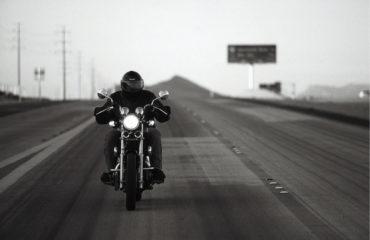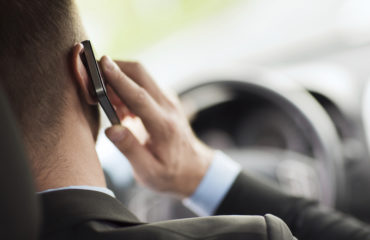A short time ago I was at a traffic safety conference and one of the speakers asked a very simple question of everyone there – What will you do TODAY to contribute to making where you live and work safer? It is a question we should all ask ourselves daily. That question is a recognition that every day we all have the opportunity to make our roads safer, not just as safety advocates but also as consumers. Below I will provide nine tips how you can be a safer road consumer.
Do You Recognize the Dangers?
As consumers of the roads we all have a number of responsibilities, one of which is the responsibility to be as safe as possible and not put others at risk. There are many dangers all around us, some we recognize immediately, others we may not. But traveling on the road is the most dangerous activity the vast majority of people do on a regular basis, whether it is driving, riding as a passenger, riding a bicycle or walking. Yet because it is so much of a regular activity, and we usually get from point A to point B safely, we tend to take it for granted.
1.24 million people are killed each year on the world’s roads because of this regular activity. That means 3,400 people are dying every day of the year from traffic crashes, and almost ½ of those fatalities are made of up pedestrians, cyclists, and riders of motorized two-wheelers and their passengers.
It is also important to remember that fatalities are not the only possible result of a traffic crash, between 20 and 50 million people suffer non-fatal injuries, many which are life-changing occurrences.
Being a Safer Road Consumer
Now it is time for you to ask that question. Those roads you travel on, on a daily basis, what will you do, TODAY, to contribute to making them safer? Below you will find nine tips that you can do, today and everyday, to make a difference. (Click on the green links to read more about that particular topic.)
- Put the phone down and drive. In today’s society it is a common occurrence to see someone driving while talking on a phone, or worse yet, texting. Everyone has heard of Distracted Driving, yet it is always the other person who does it. If you talk on the phone (hands free or not) you are driving distracted and putting everyone at risk of serious injuries or death. Put the phone down and focus on what is important—getting to your location safely. Remember, distracted driving is impaired driving.
- Slow it down. Almost 1/3 of all fatal crashes are estimated to be speeding-related. That means almost 1/3 of all crashes are because someone was exceeding the speed limit or driving too fast for conditions. Speed limits are set for a reason, and they are usually based on a number of factors, including road conditions, traffic patterns and the surrounding area. Around the globe it is estimated that just a 5% reduction in the average speed would reduce the number of fatal crashes by 30%. Slow it down and arrive alive.
- Wear Your Safety Belt. Wearing a safety belt can reduce the risk of death of front seat passengers by 40-65% and for rear seat passengers by as much as 75%. No matter where you are sitting in a car, always fasten your safety belt while on the road. Seat belts are safety belts. Wear them.
- Wear a good-quality helmet. If you are riding on a motorcycle, moped or similar vehicle, wearing a good-quality helmet can reduce the risk of death in a crash by 40%. In the U.S. a good-quality helmet means one that is approved by “DOT,” the Department of Transportation. Just like a safety belt in a car, a motorcyclist should always wear a helmet while on the road—whether you are a driver or a passenger. Motorcyclist—Got Your helmet?
- Don’t drive impaired. While it is common for people to say don’t drink and drive—there is now public awareness that substances other than alcohol also cause impairment. Drunk driving and Drugged Driving are both dangerous—for the driver and those around him or her. Whether the substance is alcohol, illegal drugs, or prescription medication, the critical process is to recognize the possibility of harm, and take action. Don’t take the risk; don’t drive impaired.
- Share the Road. If you are driving a car, you are not the only person or vehicle on the road. Depending on the time of day and the weather, you may find semi-trucks, bicyclists, motorcyclists and pedestrians all using the road. All of them have the right to do so, whether it is crossing the road at a crosswalk or cycling along side of the road or whatever activity is being done, remember to stay focused and recognize their right to use the road. It’s Time to Share the Road.
- Keep your cool while driving. There is no question that as human beings at some point we will all get mad or frustrated about someone driving too slowly, or being cut off by another driver or being in a traffic jam because of weather or a crash. However, it is at this point that we need to take a deep breath, and ultimately, ‘take a chill pill.’ Aggressive driving creates greater driving risks. While the trigger may be something minor, it can have immense consequences. Taking a chill pill can start before leaving home. For example, if you have to be somewhere at a specific time, try to give yourself extra time to get there. If running late is unavoidable, keep in mind “better late than never.” Keep your cool to stay safe in a crazy world
- Get your rest before driving. Drowsy Driving is a significant contributor to crashes. A person driving on a lack of sleep is someone looking to be in a crash. Just like alcohol, sleep deprivation impairs our ability to drive safely. Being awake for 18 hours and then driving is similar to driving at a .05 BAC (Blood Alcohol Content). The only “cure” to drowsy driving is getting enough sleep. Keep in mind that sleep is a necessity, not a luxury. Adults need 7 to 9 hours of sleep a day and adolescents need 9 to 10 hours. The best strategy to avoid drowsy driving is to make your plans before starting to drive and get your rest. Sleep is the only cure.
- Stop on Red. How many times have you tried to “beat the red?” Did you know that the T-bone intersection crashes caused by red-light runners result in some of the most severe injuries, or that about half of the deaths in red-light running crashes are pedestrians, bicyclists and occupants in other vehicles that are hit by the red-light runners? Decide now that you will always be prepared to Stop on Red as a driver, cyclist, or pedestrian. When the light turns green, look in all directions for potential red-light runners before proceeding, whether driving, cycling or walking. Running a Red Light is Dangerous.
How Will You Contribute Today?
Day in, day out, you are driving, you are riding in a car or a bus, and you are walking along the road. Day in, day out, YOU can make a difference. You can contribute to safer roads. As consumers of the roads, we are interacting with each other and because of that, we have a responsibility to keep all of us safer. Following these nine tips will have a significant impact: saving lives and reducing injuries. Follow these nine tips and you will contribute to a safer community and be a lifesaver. Congratulations.
What change(s) did you make to be a safer road consumer? Let me know in the comments below.








